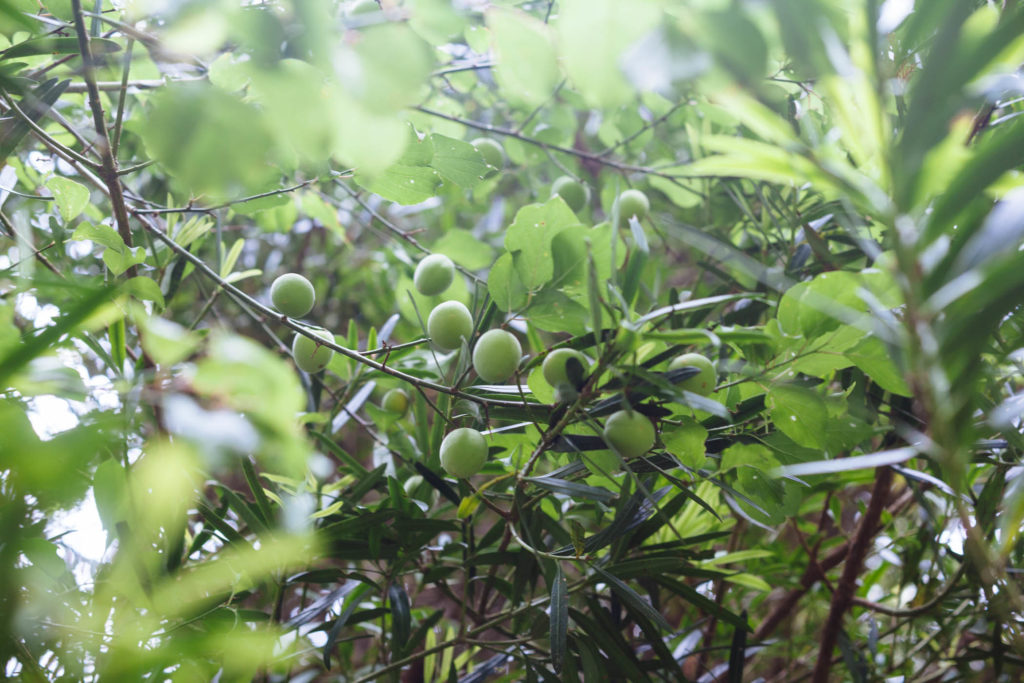
I absolutely love the season of ume shigoto, plum work. It grounds me at a time when I start to feel untethered. You see, I’m a homebody with a serious case of wanderlust. So living in two places suits me. I get to take a long trip, wake up in a completely different environment, speak a different language, eat different foods, jolt myself with a new perspective, and still feel at home. But the moment of transition is as exciting as it is unnerving. My anticipation of the journey and excitement is balanced equally by separation anxiety. So tending to my trees and immersing myself in the meditative quality of preserving the plums and the thought of my ume treasures tucked away keeps me feeling close to Mirukashi even as I prepare to leave.
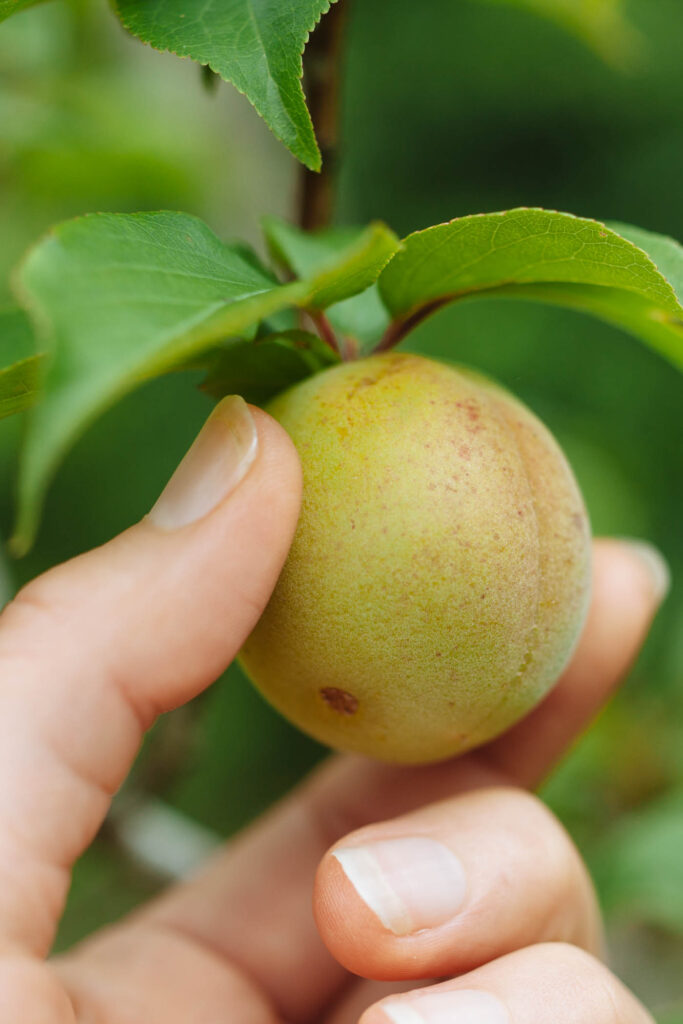

It been an odd couple of years for ume in Mirukashi. A few weeks back I had stood on the narrow balcony outside Kuniko’s house looking out over the ume trees puzzled by the yellowed canopy of my three most prolific trees. Their color stood out, unusual against the more familiar, verdant green of the other trees below. When harvest day rolled around I walked down into the orchard with baskets ready to cull a normally large harvest, 30-40 kilograms, but found only a scant 4-5 kilos of plums. I left utterly perplexed. And disappointed. For as challenging as it can be to navigate weather and work and get a large batch of ume washed, soaked, salted, and stored away with a bit of shiso before a hard deadline of a fight back to the States, I absolutely love the season of ume shigoto.
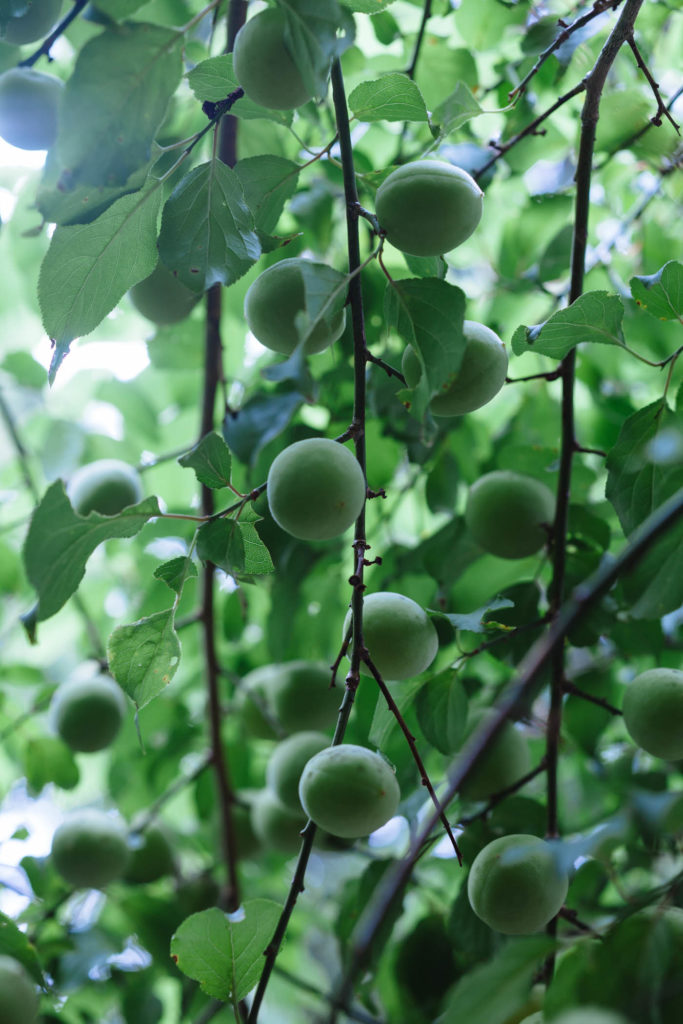
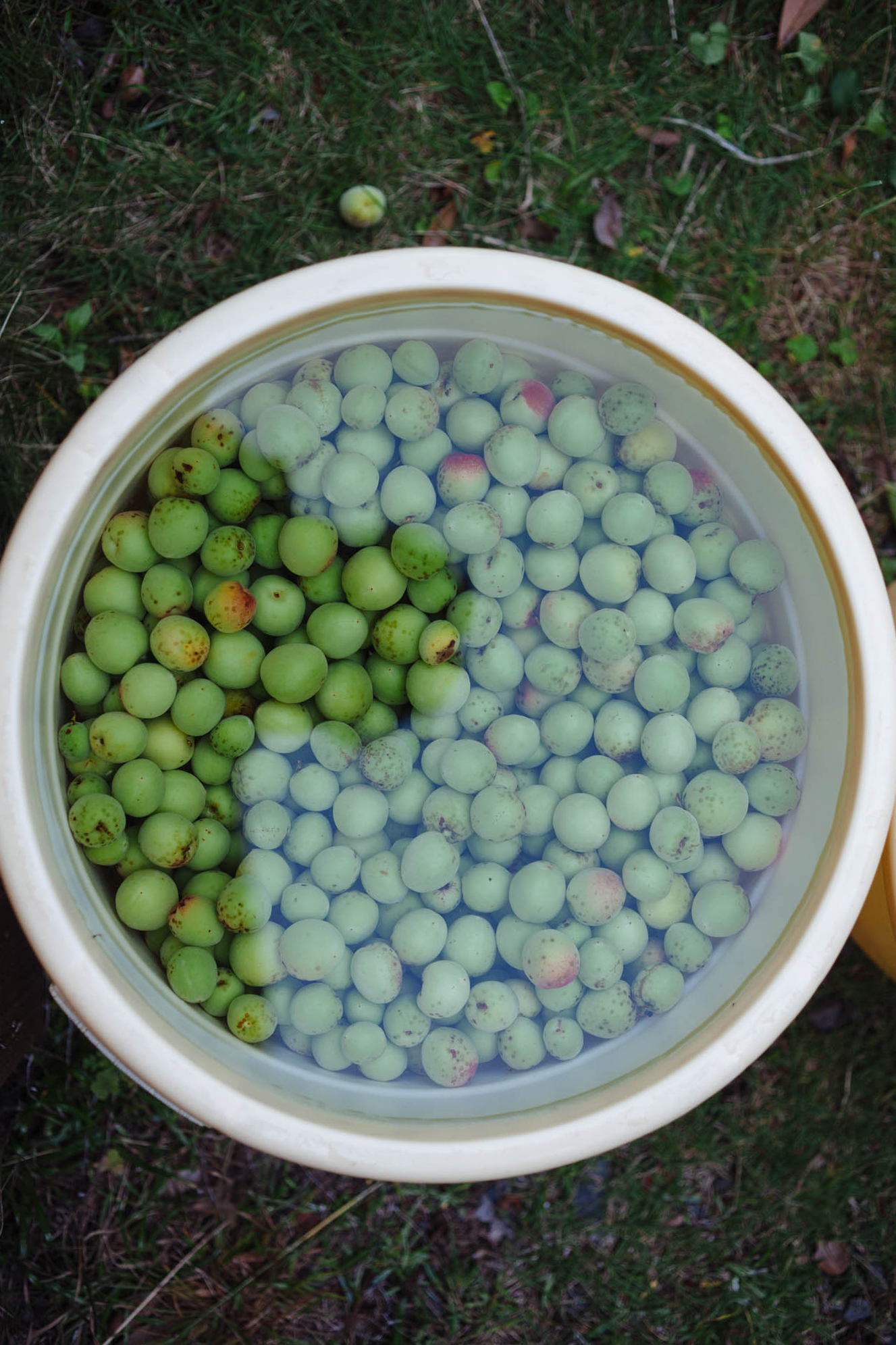
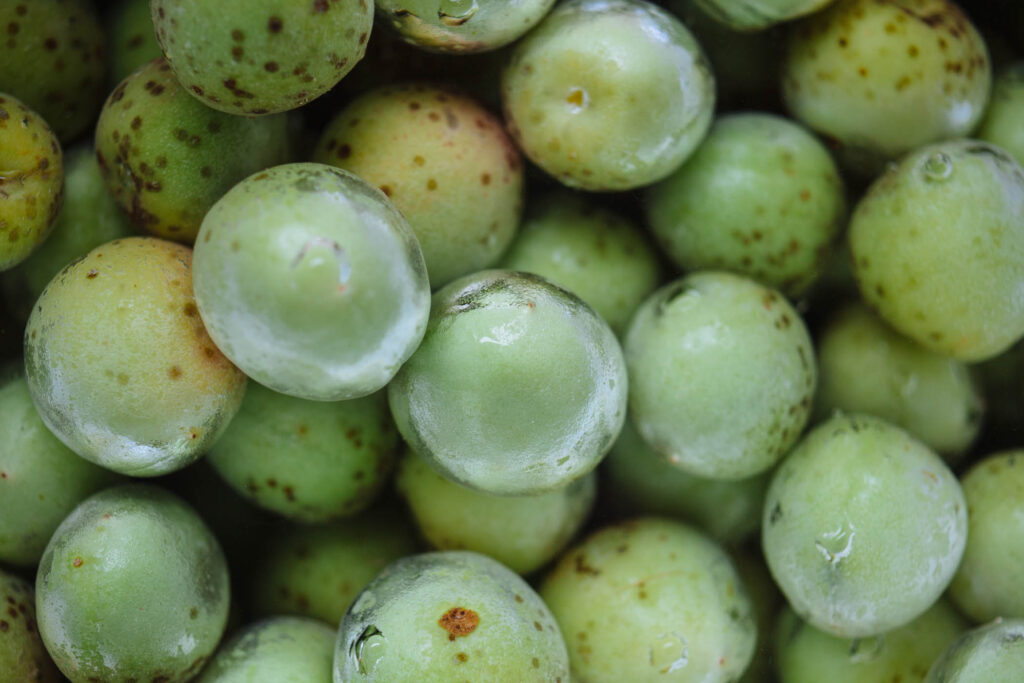
I was about to console myself with the notion that without ume, the pace of the next several days would be much saner, when I remembered the wild ume tree tucked into one corner of a triangular bit of land that stands between our existing property and the road that leads to it, a piece of land that we acquired a couple of years ago. I went off to investigate. Choked with vines, but leafy and green, the wild and overgrown branches mingle with neighboring trees. But ducking under its canopy, I found it heavy with fruit. It was an adventurous harvest, but with a bit of jumping and reaching and climbing I went home with enough ume from that single tree for syrup, liqueur, umeboshi, and jam. I wonder if it will all be laced with some wild threads of flavor.
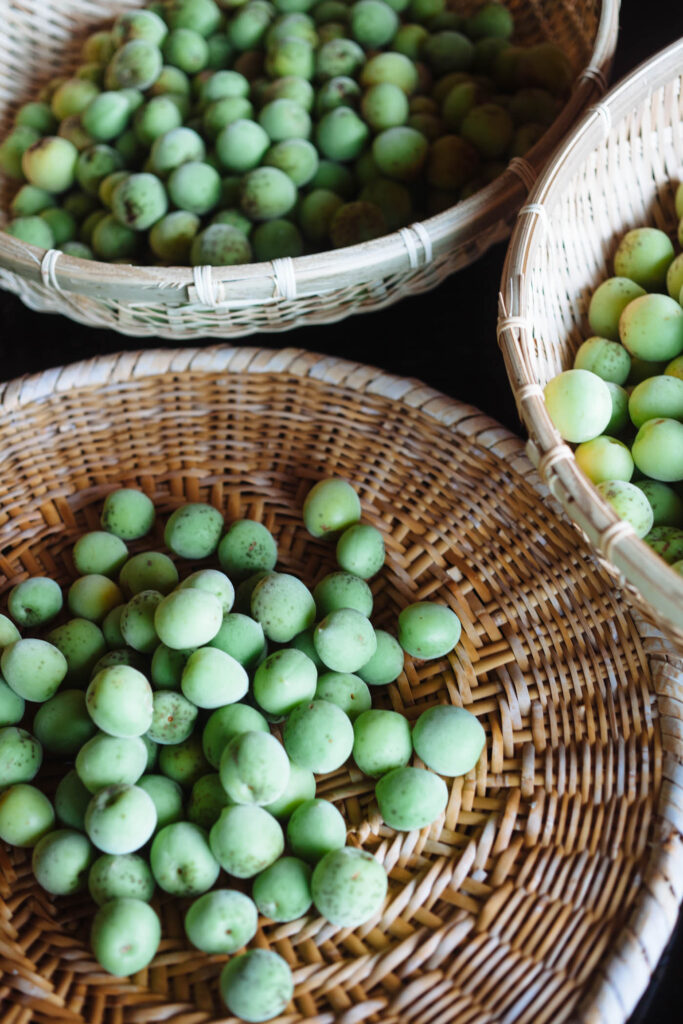
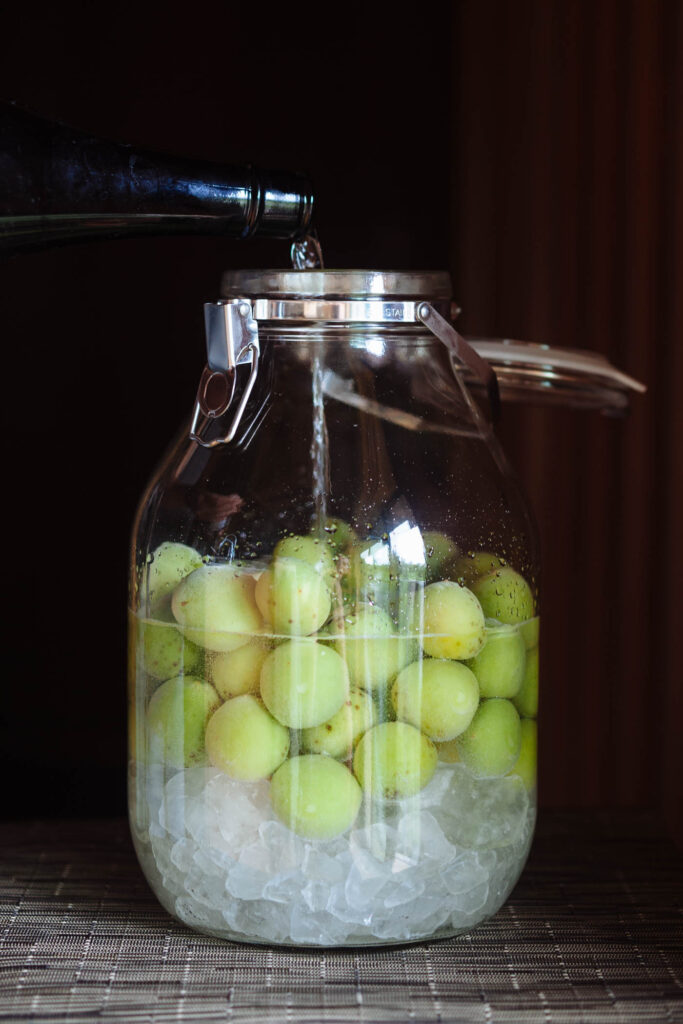
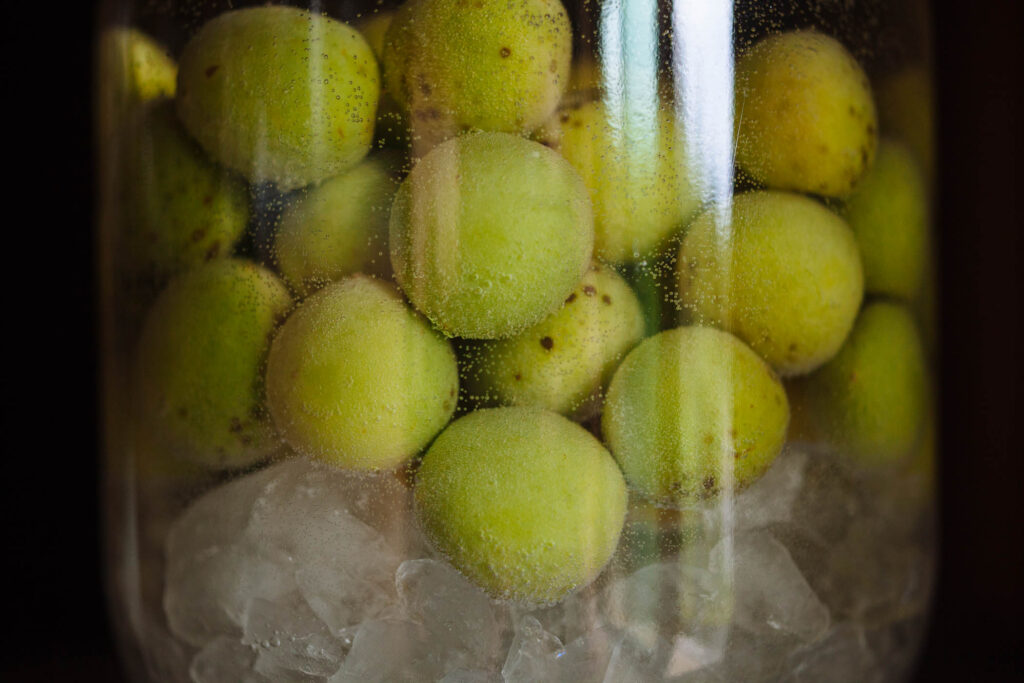
I sat on the deck under the eves the next day listening to the pitter patter of gentle rain falling. Before long the heavy rains of tsuyu would silence the song birds but on this morning they chattered excitedly in the wet glow of an early, gentle summer rain.Pulling the ume one by one from a bucket of water, I inspected their condition and removed bits of stems still lodged in their fuzzy navels. It’s fascinating, the particular tolerances we each have. My mother and Hanako can spend hours endlessly practicing scales or playing the same song over and over on a guitar or piano. I however tire quickly of such repetition. But in a moving vehicle I can happily while away the time gazing at the passing landscape, letting eyes and mind wander. I’ve spent days staring out the window of converted school buses traversing narrow twisting roads frighteningly close to sheer cliffs through the mountains of Guatemala. I spent every minute of an eight hour water taxi trip in Cambodia scanning the passing blue waters and lush river’s edge letting thoughts float freely through an idle mind. I have always excelled at daydreaming in this way and the tasks of preserving are the same for me. A long morning spent slicing daidai rinds for marmalade or plucking the stems one by one from ume fruits is, for me, pure mediative bliss.

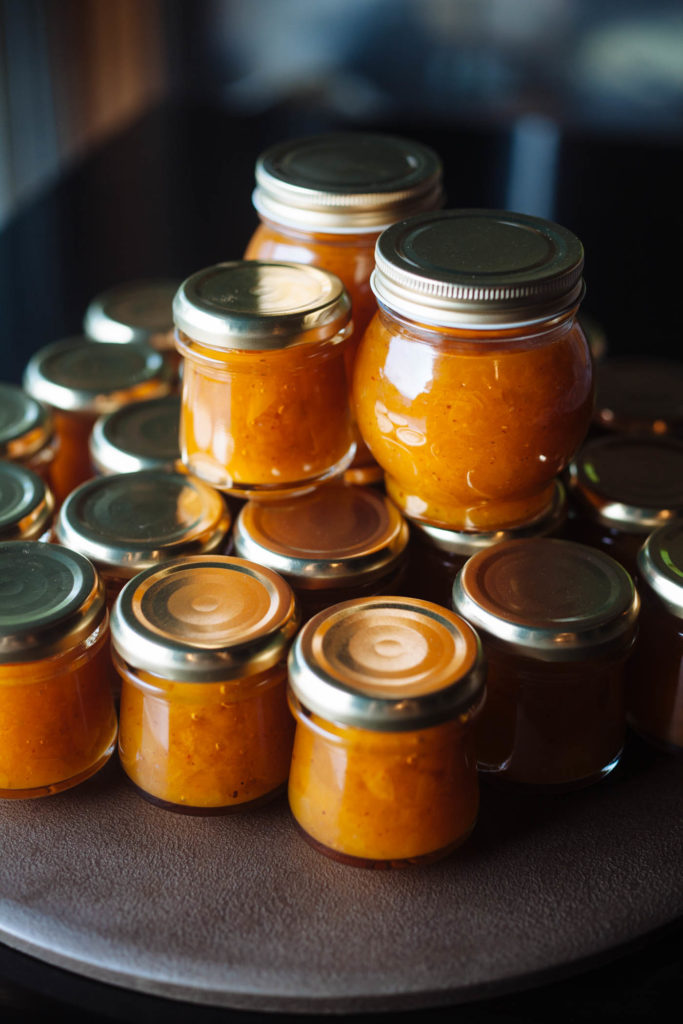
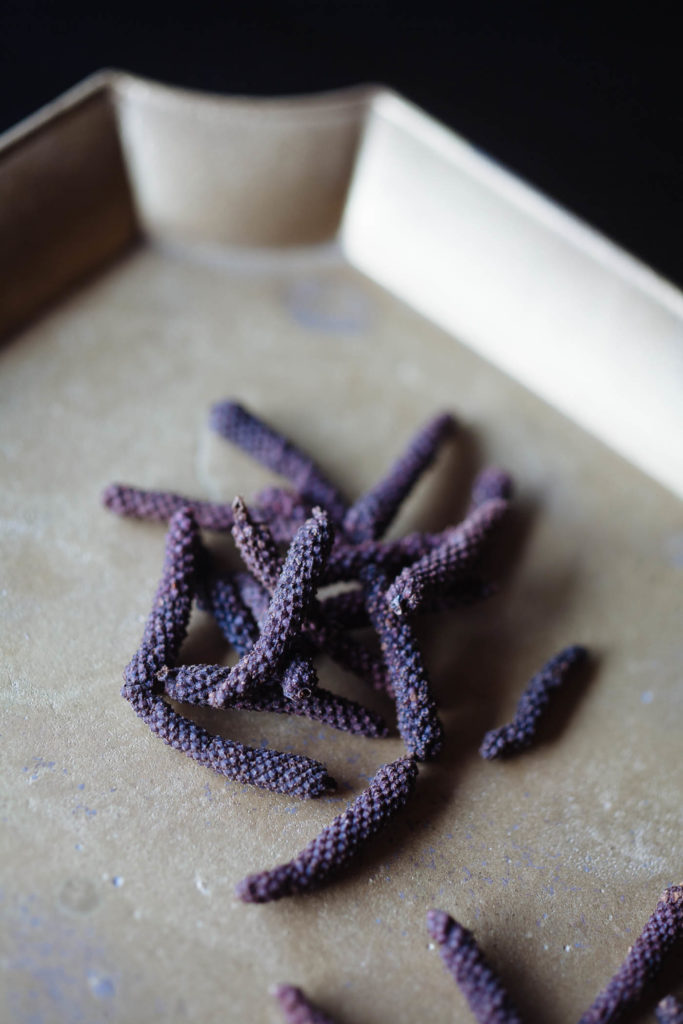
When the ume were salted I turned to the small batch of very ripe ume from the orchard and tried out a recipe I’ve had in mind since this time last year when I first made ume jam. Ume jam is was delicious, and regal in its golden color, but I couldn’t help but think that another layer of spice would compliment the fruit like the star anise I add to my Maine blueberry jam. I reached for Okinawan long pepper and grated a hearty dose into the jam. Perfect.